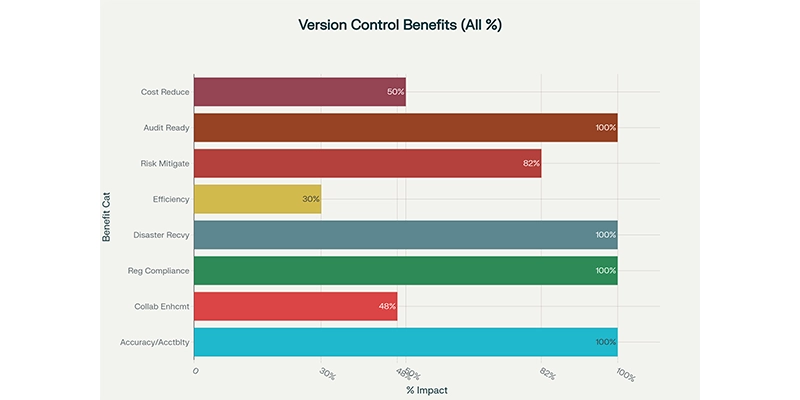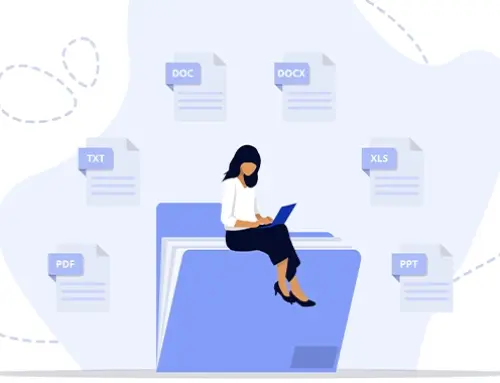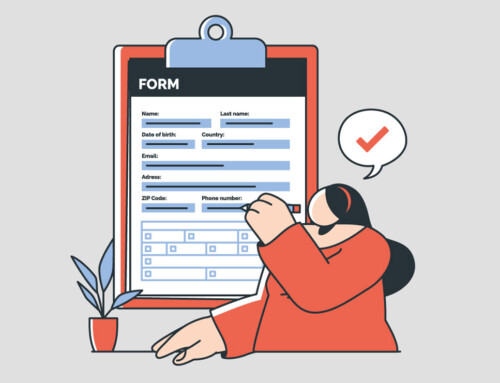Contents
Lost documents, overwritten files, and untracked edits can create malpractice risks. Poor document management for lawyers leads to lost revenue, time leakage, compliance failures, and client dissatisfaction. Many small and mid-sized firms operate without centralized storage, naming conventions, or audit-ready systems, which increases the risk of data loss, billing gaps, and ethical violations.
Modern document management systems resolve these challenges by centralizing storage, securing access, and automating file workflows. A well-implemented platform allows attorneys to tag files by matter, enforce naming standards, apply version control, and integrate documents directly with timekeeping, billing, and calendaring tools.
This article is going to go over:
- The core requirements of a compliant and efficient legal document system
- Ten strategies to streamline document management for attorneys
- How to use automation, search, templates, and secure portals to improve performance
- Practical steps for implementation using tools like RunSensible
Each section includes clear actions your firm can take to reduce administrative work, increase billable efficiency, and meet ethical obligations with confidence.
Why Document Management Matters
Documentation is central to the practice of law. Attorneys must create, manage, and preserve records that support pleadings, contracts, billing, compliance, and evidentiary integrity. Poor document management increases the likelihood of malpractice, billing inefficiencies, and regulatory violations.
Financial and Operational Costs
Document management inefficiencies are a quantifiable financial liability. According to McKinsey, knowledge workers spend up to 20% of their workweek searching for information, including documents relevant to legal research and filings. In legal practice, this translates to 2.3 hours of search inefficiency loss per attorney weekly.
Firms managing tens of thousands of documents annually experience further downstream effects:
- Version control issues contribute to 21.3% of productivity loss in legal offices.
- Paper-based archives consume valuable real estate and staff time while increasing the risk of misfiling.
- On-premise digital systems incur higher IT maintenance and security costs compared to modern alternatives.
Inefficient document search and version tracking exacerbate the already low average law firm billing, which accounts for under 30% of its workday, particularly in litigation-intensive practices.
Ethical and Regulatory Compliance
Multiple ethical obligations bind attorneys to client documents. Most prominently, ABA Model Rule 1.15 requires the safekeeping of client property, including financial records and legal materials, for a minimum of five years after representation starts.
Jurisdictional retention policies often require the retention of closed case files for six years or more, with some exceptions requiring indefinite storage, depending on the nature of the case or statute of limitations.
In addition:
- Failure to produce documents in discovery can trigger sanctions, even if it is due to poor internal management. Enforcement has historically been inconsistent; however, it opens a window of liability.
- Many state bars now require technological competence as part of their ethical compliance requirements, which include secure storage, retrieval capabilities, and basic metadata management.
- Audit trails and permission logs are essential for demonstrating procedural compliance, particularly in trust accounting and regulatory audits.
Most legacy systems (paper or basic digital storage) do not meet these procedural standards without excessive manual intervention.
Client Technology Expectations
Lawyers are no longer the sole audience for legal documents. Clients, courts, regulators, and auditors often require digital access to case files and supporting records. Document management systems must accommodate this expanded ecosystem without compromising control, confidentiality, or chain of custody.
Clients now expect firms to provide secure online access to their case documents, including pleadings, retainer agreements, and correspondence. Real-time collaboration tools and electronic signatures have become standard in sectors such as finance and healthcare, creating a comparative expectation in legal services. According to survey data, 37% of legal clients are willing to pay a premium for firms that use updated technology infrastructure.
Technology also affects competitiveness. A firm that relies on email and local file storage may appear outdated or insecure to enterprise clients, who often evaluate vendors based on their cybersecurity protocols and standards. By contrast, document management systems that offer encryption, access logs, version control, and secure sharing portals mitigate reputational risk while improving operational agility.
Cloud-based platforms like Runsensible document management offer stronger baseline protections than most in-house setups. These include:
- Encrypted storage and transfers
- User-specific access restrictions
- Automated retention policy enforcement
Such features now align with baseline client expectations. Firms failing to implement them risk losing clients to more technically proficient competitors.
The following ten tips provide a structured approach to addressing common risks in document management for lawyers, each recommendation is based on current legal technology capabilities and common practice management gaps observed across firms of all sizes.
1. Adopt a Centralized, Cloud-Based Repository
Law firms often rely on a combination of storage locations, including email attachments, desktop folders, in-office file servers, and external hard drives. This fragmented approach leads to version confusion and increased vulnerability to data breaches. Attorneys working remotely or across offices face access delays, while staff waste time searching across platforms for the most current file. Disparate storage systems also impede security auditing. Without a unified platform, it’s nearly impossible to enforce access controls, monitor file activity, and ensure compliance with retention policies.
Translation to Cloud Document Management
Transitioning to a centralized, cloud-based document management system (DMS) is the most effective solution for managing documents. To ensure a successful transition, firms should follow these best practices:
- Choose a Matter-Centric System: Select a DMS designed for the legal industry that organizes files by matter. This intuitive structure ensures all documents related to a specific case are stored in one secure, easily accessible location. Prioritize platforms with robust, built-in security features like end-to-end encryption and multi-factor authentication (MFA) to protect client data.
- Standardize Indexing: Establish a consistent indexing system from the outset. Using tags or matter numbers as the primary organizational method makes searching for files quick and reliable, eliminating the guesswork of hunting through various folders and drives.
- Automate Workflows: Leverage API integrations to connect your DMS with other firm software. For example, tools like RunSensible can automate the entire document lifecycle, from a one-click save at intake to secure archiving, streamlining operations, and reducing manual effort.
2. Standardize File-Naming & Metadata Conventions
Disorganized files create friction in nearly every stage of legal work, including intake to trial preparation. Standardized naming and folder systems reduce errors, enable fast retrieval, and support legal compliance across all matters.
A. Enforce Systematic File Naming for Searchability and Consistency
Standardized naming conventions reduce ambiguity, streamline retrieval, and support compliance with record-keeping obligations. Without consistency and document version control, attorneys risk duplicating files, misplacing records, or relying on incorrect document versions.
A well-structured naming scheme should identify the matter, document type, date, and version. For example:
- Smith_v_Jones_MotionToDismiss_2025-06-30_v2.docx.
This approach eliminates confusion between drafts and ensures that search tools and AI document automation can accurately identify relevant content. It also assists in meeting discovery obligations and creating clear audit trails.
Consistent naming practices should apply to all file types, including PDFs, emails, exhibits, and scanned correspondence. Staff must be trained to use the schema uniformly, and the document management system should enforce rules through templates or metadata tagging.
Firms that implement standardized naming reduce document misclassification, lower the incidence of misplaced files, and decrease search times by an average of over 50 percent.
B. Use Matter-Based Folder Templates with Role-Based Access
Folder structures should mirror legal workflows, organized by matter and subdivided into consistent categories such as pleadings, correspondence, discovery, contracts, and billing. Each new matter should follow a template that applies a predefined set of folders and permission structures.
Templates eliminate guesswork, reduce human error, and enforce best practices across the firm. For example, a new litigation folder might auto-generate these subfolders:
- 01_Pleadings
- 02_Discovery
- 03_Correspondence
- 04_Research
- 05_Billing
Role-based access controls should limit the visibility of sensitive documents to authorized personnel. For example, billing files may be visible to partners and administrative staff but hidden from junior associates.
Proper folder hierarchy also supports compliance with ABA Model Rule 1.15, which requires the safekeeping of client property through organized and traceable storage. In audits or malpractice defense, a logically structured folder tree can demonstrate procedural diligence.
Firms without standardized folder frameworks face elevated risks of spoliation, data breaches, and noncompliance. A 2024 survey of midsize firms found that 35% of malpractice claims involving lost files were directly linked to disorganized internal storage systems.
3. Harness OCR and Full-Text Search
Legal departments manage over 88,000 pages of documents, much of which is locked in non-searchable PDFs or scanned images. This format hinders efficient search and reuse, resulting in avoidable delays.
Optical Character Recognition (OCR) solves this by converting images into searchable text. It reduces document search time by 80% and manual data entry time by up to 85%. Batch OCR tools process thousands of files simultaneously, enabling legacy archives to be digitized in a matter of days.
Retrieval Accuracy and Legal Research Gains
OCR-enabled systems support clause-level search across the entire document set. This eliminates manual review and significantly reduces data errors, which average 18 to 40 percent in manual processes. Modern OCR achieves an accuracy rate of over 95 percent.
Search analytics further boost productivity by revealing frequently cited clauses and terms, which help lawyers standardize templates and improve research workflows.
Measurable Financial Returns
OCR tools cost less than $50 per month, yet some firms report monthly savings of $40,000 to $50,000 through reduced manual work. Documented first-year ROI has reached 740 percent, with firms recovering an average of 9.2 percent of revenue lost to document inefficiencies.
OCR transforms static documents into searchable assets, shifting lawyer time from admin work to legal analysis and client service.
4. Implement Document Version Control
Legal workflows involve multiple revisions, reviewers, and deadlines. Without automated version control, firms risk document overwrites, lost edits, and unauthorized changes, which can lead to malpractice and compliance liabilities.
Prevent Errors and Preserve Edits
Version control systems assign unique identifiers to each draft and record every change made, including the name of the person making the change, the date, and the time it was made. Version control protects against the most common failure point: simultaneous edits. Check-in/check-out protocols prevent accidental overwrites, while audit logs capture every action taken within the document lifecycle.
48% of legal professionals report difficulty locating the correct version of a document, and 82% of data breaches involve human error¹. Automated systems mitigate both risks by ensuring all edits are tracked, preserved, and easily reversible.
Support Compliance and Chain of Custody
Courts and regulators increasingly require defensible documentation trails. Modern versioning systems generate immutable logs compatible with SOX, HIPAA, and GDPR standards. These logs support admissibility by recording user identity, timestamps, and document status at each revision point.
Role-based access controls ensure only authorized leads can publish final versions. This access control preserves document authority while enabling collaborative drafting.
Firms using version control report a 50 percent reduction in audit times and significantly lower operational risk.
5. Secure Client Confidentiality with Role-Based Access
Legal documents often contain privileged, confidential, or highly sensitive information. Unrestricted access, even within a law firm, poses significant ethical, regulatory, and reputational risks. Role-based access controls (RBAC) enforce data confidentiality by limiting document visibility and edit permissions to only those assigned to the matter.
RBAC systems integrate with the firm’s document management software to apply permissions at the user, team, or matter level. For example:
- A junior associate may view only assigned pleadings but not financial records.
- External consultants may receive read-only access to specific exhibits.
- Administrative staff may access templates but not client correspondence.
All access events are logged, timestamped, and tied to user identities, supporting compliance with ABA Model Rules 1.6 and 5.3, as well as GDPR and HIPAA requirements.
Granular access reduces insider threats and satisfies client security expectations. Firms using RBAC report reduced data exposure events and improved audit performance across regulatory reviews.
6. Establish Retention Policies and Legal Holds
Without standardized retention schedules, firms risk both regulatory noncompliance and operational inefficiency. Documents retained for too long increase discovery burdens and expose organizations to data breach risks. Those deleted prematurely can violate legal preservation obligations.
Retention Schedules by Document Type
Each document category, including contracts, court filings, correspondence, and billing records, should have an assigned retention period based on regulatory frameworks (e.g., IRS, SEC, GDPR) and jurisdictional requirements. For example:
- Client files: typically 5–7 years post-matter closure
- Tax documents: minimum 7 years under IRS rules
- Employment-related records: vary by state and statute
Retention automation tools can classify documents and schedule reviews, archiving, or deletion according to established policies.
Legal Holds to Prevent Spoliation
When litigation or a regulatory investigation is reasonably anticipated, all relevant documents must be preserved. Legal hold features in modern document management systems suspend automated deletion and alert custodians to preserve specified files.
Failure to execute holds may result in sanctions, adverse inference rulings, or dismissal of claims. Systems should log hold issuance, custodian acknowledgments, and all preservation activities to establish a defensible record.
7. Enable Remote and Mobile Access Without Compromising Security
Legal professionals frequently work from multiple locations, including courtrooms, client offices, and during travel. A document management system must allow secure access from any device while maintaining data confidentiality and integrity.
Mobile and Web-Based Access
Modern document platforms provide encrypted mobile applications and browser portals that allow attorneys to:
- Review case files during proceedings
- Access documents during remote meetings
- Submit time entries or case notes from the field
All access should preserve metadata, folder structure, and matter-centric organization.
Security Protocols for Offsite Access
To safeguard sensitive legal information beyond the firm’s internal network, remote access must incorporate:
- Multi-factor authentication
- Role-based permission settings
- End-to-end encryption
- Automatic timeouts for inactive sessions
Firms should enforce mobile device management policies that enable administrators to wipe data from lost or compromised devices remotely. All-in-one platforms like Runsensible Mobile will do that.
Remote and mobile access capabilities must align with the confidentiality obligations of Model Rule 1.6(c) and applicable global regulations. Properly implemented, these features increase flexibility without introducing unacceptable risk.
8. Classify and Retain Documents According to Legal Hold and Compliance Policies
Law firms must retain documents for specific durations, depending on the jurisdiction, practice area, and regulatory obligations. A failure to enforce proper retention or apply legal holds exposes firms to sanctions, spoliation claims, or penalties for noncompliance.
Automate Classification and Retention Schedules
Effective document management for attorneys begins with accurate classification. Every file should be assigned a document type, jurisdiction, and matter code upon creation or upload. From there, automated retention policies can be applied based on predefined rules.
For example:
- Employment litigation files may require a seven-year retention period
- Tax advisory records might demand a ten-year minimum retention in certain jurisdictions
- Communications relevant to ongoing litigation must be preserved indefinitely under legal hold
Retention rules should be configurable within the DMS and updated regularly to reflect regulatory changes.
Enforce Legal Holds
When litigation is anticipated or active, firms must suspend routine deletion for relevant materials. Legal hold features must:
- Identify and lock affected documents
- Prevent accidental or automated deletion
- Log user attempts to modify or access held files
Audit-ready reporting is essential to demonstrate compliance in court or during regulatory review. Failure to properly enforce holds can lead to adverse inference instructions or monetary sanctions in discovery disputes.
9. Enforce Role-Based Access and Document Lifecycle Controls
Legal document security requires more than basic user permissions. A defensible document management system for attorneys must support precise access governance and automated lifecycle enforcement.
Role-Based Permissions by Matter and Function
Access should be restricted based on both the matter and the individual’s function within the case:
- Partners: Full access and publishing rights
- Associates: Edit authority on active documents, no publish access
- Paralegals: Limited to discovery and procedural materials
- Support staff: View-only access for administrative content
Restricting access reduces exposure and ensures ethical compliance with confidentiality rules under ABA Model Rule 1.6.
Monitor Access and Actions with Immutable Audit Logs
All document interactions must be logged in an immutable audit trail:
- Records should include timestamp, user ID, action performed, and originating IP address
- Logs must capture changes to permissions, access escalation, and document deletions
- Audit logs must be read-only and cryptographically sealed to maintain evidentiary value
Such logging is necessary to comply with regulatory standards and to support internal or third-party audits.
Apply Retention Automation and Backup Standards
Control the document lifecycle with these two core automations:
- Auto-Purge Scheduling: Configure purge protocols aligned with statutory retention periods (e.g., seven years for client files, per IRS and legal ethics guidance)
- Off-Site Backups via the 3-2-1 Rule: Maintain three copies of all documents, on two storage types, with one copy stored securely off-site or in the cloud
These controls reduce unnecessary storage, enforce compliance, and provide assurance of recovery in the event of a breach or system failure.
10. Train Continuously and Measure Adoption
Technology only delivers operational value when users adopt it fully and correctly. Document management for attorneys requires ongoing training paired with measurable adoption metrics.
Prioritize Practical, Recurring Training
Legal teams cannot afford to learn systems passively or through trial and error. Integrate structured, time-efficient sessions into your firm’s regular workflow:
- Quarterly Lunch-and-Learns: Cover new features, updated workflows, and error trends using real documents and role-specific scenarios
- Role-Based Training Tracks: Tailor sessions for attorneys, paralegals, and administrative staff based on actual DMS usage patterns
- Onboarding Protocols: Require documented training completion before granting DMS editing or publishing privileges
Practical training turns the DMS into an asset that shortens tasks rather than complicates them.
Measure What Matters
Firms should not assume Adoption; they should verify it through consistent tracking:
- Average Search Time: Benchmark retrieval speed across matters
- Document Retrieval Success Rate: Track how often users find the correct file on the first attempt
- Portal Feature Usage: Measure login frequency, mobile access, and use of templates or automation tools
Attorneys average 42–64 hours of work weekly, but bill less than one-third of that time. Untracked DMS usage often leads to inefficiencies disguised as productivity. Measuring key performance indicators reveals bottlenecks and confirms whether the system supports its intended use case.
-
RunSensible: All-In-One Document & Practice Management
RunSensible offers an integrated platform that addresses the most common document management pain points for small and mid-sized law firms. Instead of juggling multiple disconnected tools, attorneys can manage documents, matters, billing, calendaring, and client communication from a single system.
By combining automation with secure, cloud-based storage, RunSensible helps law firms improve productivity, compliance, and client experience without increasing overhead or complexity.
Common Challenges Solved by RunSensible
Challenge RunSensible Feature Benefit Manual filing and duplicated documents Matter-centric repository with AI duplicate detection Reduces clutter and ensures document integrity Unbilled document work Automatic time capture on document edits and access Increases billable hours without extra effort Insecure file sharing and updates Built-in secure client portal with e-signature support Faster turnaround and improved client satisfaction Retention and audit trail requirements Immutable version history and retention scheduling Simplifies compliance with ABA and GDPR standards -
Quick Start Steps
- Drag and drop your existing folders into the DMS to migrate documents instantly
- Apply default or custom naming conventions under Settings → DMS
- Activate the client portal per matter to enable secure file sharing, uploads, and digital signing
- Integrate with intake forms and billing tools for automated document capture and time tracking
RunSensible combines essential features into a single, cohesive platform. For firms looking to reduce administrative work, ensure compliance, and improve how they manage case files, it offers an immediate and scalable solution.
Ready to simplify your document management and recover lost billable time?
Book a personalized RunSensible demo now and see how centralized, automated workflows can transform your practice.Final Thoughts
The ten strategies outlined in this guide offer a comprehensive roadmap for transforming how law firms manage documents. This transformation begins not with technology but with policy. Firms must first establish clear and enforceable rules for document retention, naming conventions, metadata tagging, access control, and data backups.
Start by auditing one active matter. Evaluate how documents are stored, named, retrieved, and shared. Identify where files are missing, duplicated, misnamed, or siloed in email threads or personal drives. Pay close attention to bottlenecks in client communication, version tracking, or time capture.
Focus your next steps on areas with the highest compliance exposure or the greatest opportunity to recover billable time. Examples include:
- Missing audit trails or version history that complicate discovery or regulatory review
- Insecure file sharing that risks breaching confidentiality obligations
- Unlinked documents and billing systems cause time entries to be lost
- Inconsistent naming that slows internal search and undermines collaboration
The foundation of modern document management is a matter-centric, cloud-based system that includes encryption, multi-factor authentication, and role-based permissions. When properly configured, these systems support full-text and metadata search, streamline approval workflows, and automate intake through the archive. Integrating them with calendaring, time-tracking, and e-billing tools consolidates firm operations and eliminates unnecessary duplication.
Firms must also meet ethical obligations under ABA Model Rule 1.15, which requires the proper safekeeping of client property, including all case-related documents, communications, and billing records, in a digital context. Meeting this duty means moving beyond ad hoc storage and embracing structured, secure, and compliant workflows.
Document management is not a one-time setup; it requires ongoing maintenance and updates. Long-term success involves training, oversight, and measurable outcomes. Establish regular sessions to introduce new features and reinforce best practices. Track metrics such as search success rate, retrieval time, client portal usage, and version accuracy to measure adoption and effectiveness.
FAQs
1. Why is document management critical for small and mid-sized law firms?
Poor document organization results in lost time, missed billing, and compliance failures—issues that disproportionately affect smaller firms with limited resources. Without a centralized system, attorneys often rely on email chains, desktop folders, and shared drives, which increases the risk of misfiling and data exposure. Implementing document management for lawyers ensures that all files are securely stored, properly indexed, and instantly retrievable. This allows smaller firms to operate at the efficiency level of larger firms without increasing headcount or overhead.
2. What features should a legal document management system include?
An effective system must be matter-centric, cloud-based, and designed for legal workflows. Essential features include encrypted storage, role-based access controls, full-text search, version tracking, and integration with billing and calendaring platforms. Automation tools, such as template libraries, OCR scanning, and intake-to-archive workflows, are also critical. Systems should enforce metadata standards and generate audit trails to support compliance with ABA Model Rule 1.15 and jurisdictional retention rules.
3. How does document mismanagement increase malpractice risk?
Misfiled, outdated, or overwritten documents can lead to serious errors in pleadings, missed deadlines, or disclosure of confidential information. If a firm cannot produce the correct version of a document during discovery or compliance review, it may face sanctions, reputational damage, or even disbarment. Courts and regulators expect firms to maintain secure, searchable, and traceable file systems. A robust document management solution protects against these liabilities by standardizing processes and documenting every user interaction.
4. What are the first steps to improving document management at a law firm?
Start by auditing one active matter to identify weaknesses in storage, access, version control, and retrieval. From there, establish naming conventions, folder templates, and role-based access controls. Select a document management platform that integrates with your firm’s existing billing, calendar, and intake systems. Focus on replacing manual processes with automation and track key metrics, such as document search time, retrieval accuracy, and client portal usage, to measure progress.
5. What’s the difference between basic cloud storage and a legal document management system?
Basic cloud storage solutions, such as Dropbox or Google Drive, provide generic file hosting but lack functionality tailored to legal needs. Legal document management systems are purpose-built with matter-centric architecture, version control, secure client portals, audit logs, and metadata tagging. These systems also support compliance with ABA and jurisdictional retention standards. Unlike basic storage, a legal DMS integrates with time tracking, billing, and calendaring tools to support end-to-end practice management workflows.
6. How do law firms measure the success of a document management system over time?
Operational and compliance KPIs measure success. Key performance indicators include average search and retrieval time, document access error rates, version control accuracy, and reduction in unbilled hours. On the compliance side, metrics such as legal hold enforcement, audit trail completeness, and access control violations are critical. Firms should also track client portal engagement, mobile access usage, and system adoption rates across departments. These metrics provide objective insights into system performance and training needs.
References
Rule 1.15: Safekeeping Property-American Bar Association
https://www.americanbar.org/groups/professional_responsibility/publications/model_rules_of_professional_conduct/rule_1_15_safekeeping_property/Document Retention Policy: US Checklist | Practical Law-Westlaw
https://content.next.westlaw.com/practical-law/document/Ibb0a3895ef0511e28578f7ccc38dcbee/Document-Retention-Policy-US-Checklist?viewType=FullText&transitionType=Default&contextData=(sc.Default)SAMPLE LAW OFFICE FILE RETENTION/DESTRUCTION POLICY-New York State Bar Association
https://nysba.org/wp-content/uploads/2020/02/SAMPLE-LAW-OFFICE-FILE-RETENTION_DESTRUCTION-POLICY.pdfThe Best Document Management Software-PCMag
https://www.pcmag.com/picks/the-best-document-management-softwareReduce Malpractice Risk by Properly Managing Files-Professional Liability Fund
https://www.osbplf.org/inpractice/reduce-malpractice-risk-by-properly-managing-filesLegal API-Thomson Reuters
https://legal.thomsonreuters.com/en/products/legal-apiAI-Driven Legal Tech Trends for 2025-NetDocuments
https://www.netdocuments.com/blog/ai-driven-legal-tech-trends-for-2025/3 benefits of OCR for legal departments-Wolters Kluwer
https://www.wolterskluwer.com/en-gb/expert-insights/3-benefits-of-ocr-for-legal-departmentsRole-Based Access Control for Law Firms-The National Law Review
https://natlawreview.com/article/why-law-firms-need-role-based-access-controlFile Naming Conventions: simple rules save time and effort-University of Aberdeen
https://www.abdn.ac.uk/staffnet/documents/policy-zone-information-policies/File%20Naming%20Conventions%20July%202017.pdfThe Critical Importance of Data Backups and Offsite Storage for Law Firms-Gallagher
https://specialty.ajg.com/financial-services/the-critical-importance-of-data-backups-and-offsite-storage-for-law-firmsHow Legal Document Handling Inefficiency Costs a Lot?-HazenTech
https://hazentech.com/blogs/how-legal-document-handling-inefficiency-costs-a-lot/
Disclaimer: The content provided on this blog is for informational purposes only and does not constitute legal, financial, or professional advice.







